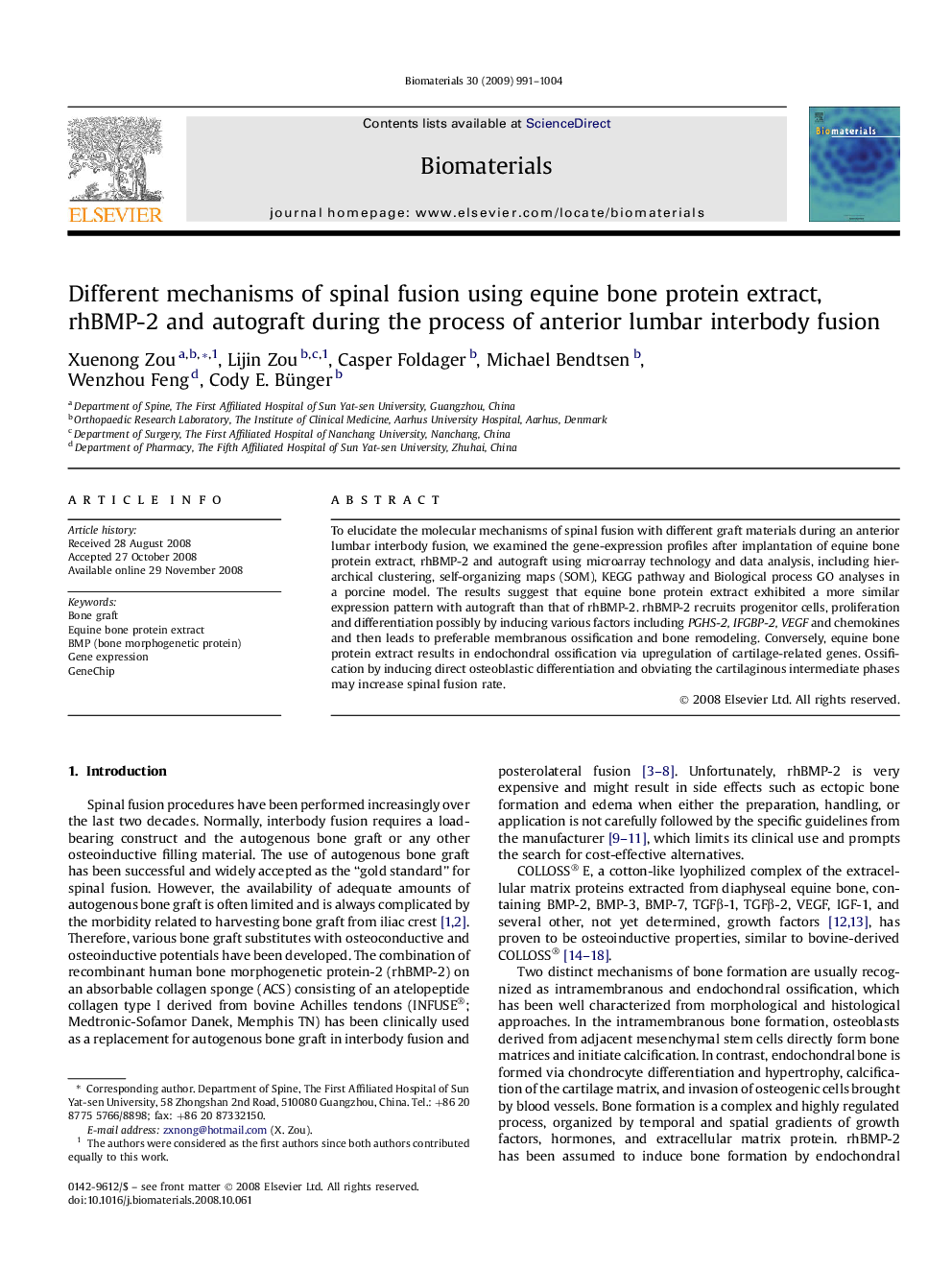| Article ID | Journal | Published Year | Pages | File Type |
|---|---|---|---|---|
| 9248 | Biomaterials | 2009 | 14 Pages |
To elucidate the molecular mechanisms of spinal fusion with different graft materials during an anterior lumbar interbody fusion, we examined the gene-expression profiles after implantation of equine bone protein extract, rhBMP-2 and autograft using microarray technology and data analysis, including hierarchical clustering, self-organizing maps (SOM), KEGG pathway and Biological process GO analyses in a porcine model. The results suggest that equine bone protein extract exhibited a more similar expression pattern with autograft than that of rhBMP-2. rhBMP-2 recruits progenitor cells, proliferation and differentiation possibly by inducing various factors including PGHS-2, IFGBP-2, VEGF and chemokines and then leads to preferable membranous ossification and bone remodeling. Conversely, equine bone protein extract results in endochondral ossification via upregulation of cartilage-related genes. Ossification by inducing direct osteoblastic differentiation and obviating the cartilaginous intermediate phases may increase spinal fusion rate.
